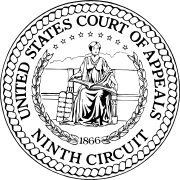Apple Computer, Inc. v. Microsoft Corporation
| Apple Computer, Inc. v. Microsoft Corp. | |
|---|---|
 |
|
| Court | United States Court of Appeals for the Ninth Circuit |
| Full case name | Apple Computer, Inc. v. Microsoft Corporation and Hewlett-Packard Co. |
| Argued | July 11, 1994 |
| Citation(s) | 35 F.3d 1435; 63 USLW 2259, 1994 Copr.L.Dec. P 27,301, 32 U.S.P.Q.2d 1086 |
| Court membership | |
| Judge(s) sitting | Ferdinand Francis Fernandez, Pamela Ann Rymer, and Thomas G. Nelson |
Apple Computer, Inc. v. Microsoft Corporation, 35 F.3d 1435 (9th Cir. 1994) was a copyright infringement lawsuit in which Apple Computer, Inc. (now Apple Inc.) sought to prevent Microsoft and Hewlett-Packard from using visual graphical user interface (GUI) elements that were similar to those in Apple's Lisa and Macintosh operating systems. The court ruled that, "Apple cannot get patent-like protection for the idea of a graphical user interface, or the idea of a desktop metaphor [under copyright law]...". In the midst of the Apple v. Microsoft lawsuit, Xerox also sued Apple alleging that Mac's GUI was heavily based on Xerox's. The district court dismissed Xerox's claims without addressing whether Apple's GUI infringed Xerox's. Apple lost all claims in the Microsoft suit except for the ruling that the trash can icon and folder icons from Hewlett-Packard's NewWave windows application were infringing. The lawsuit was filed in 1988 and lasted four years; the decision was affirmed on appeal in 1994, and Apple's appeal to the U.S. Supreme Court was denied.
Apple had agreed to license certain parts of its GUI to Microsoft for use in Windows 1.0, but when Microsoft made changes in Windows 2.0 adding overlapping windows and other features found in the Macintosh GUI, Apple filed suit. Apple added additional claims to the suit when Microsoft released Windows 3.0.
Apple claimed the "look and feel" of the Macintosh operating system, taken as a whole, was protected by copyright, and that each individual element of the interface (such as the existence of windows on the screen, the rectangular appearance of windows, windows could be resized, overlap, and have title bars) was not as important as all these elements taken together. After oral arguments, the court insisted on an analysis of specific GUI elements that Apple claimed were infringements. Apple listed 189 GUI elements; the court decided that 179 of these elements had been licensed to Microsoft in the Windows 1.0 agreement and most of the remaining 10 elements were not copyrightable—either they were unoriginal to Apple, or they were the only possible way of expressing a particular idea.
...
Wikipedia
